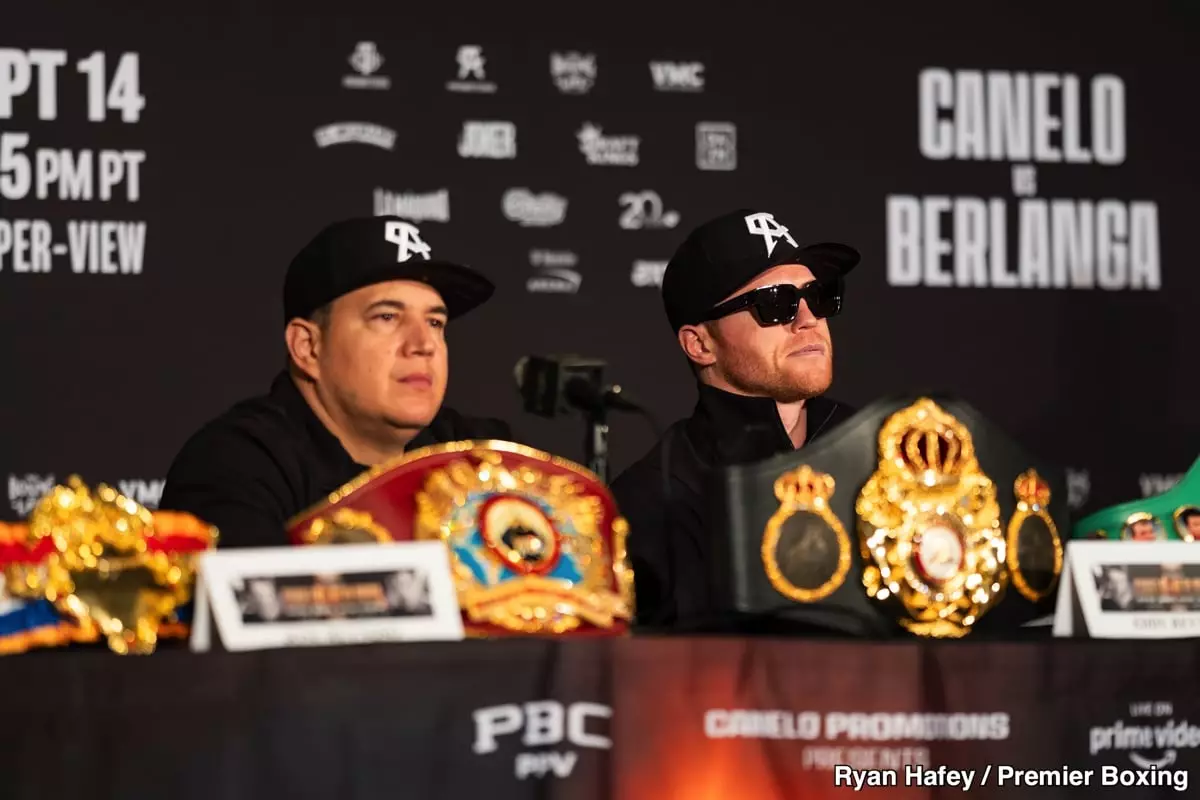In the world of boxing, heavyweight matchups often generate the most excitement, and few names resonate with fans like Anthony Joshua and Tyson Fury. Promoter Eddie Hearn, who has a vested interest in Joshua’s success, claims that a bout between these two aging champions represents the pinnacle of commercial potential in boxing today. However, there is a growing sentiment amongst boxing enthusiasts, particularly in the United States, that this claim might be overstated. The perceived decline in both fighters’ performances and the evolution of boxing fandom raises questions about the actual appeal of such a matchup.
Joshua and Fury have long been positioned as the flagbearers of heavyweight boxing, but recent performances have led many to believe that the public’s interest in a showdown between them has waned. Critics point out that both fighters have struggled against underwhelming opponents in their last bouts. This decline in form raises concerns about whether fans are still willing to invest their time and money into what many consider a stale matchup. Unlike their prime years, when they were both undefeated and on the rise, the current state of their careers, defined by losses and lackluster outings, presents a less attractive narrative.
Moreover, the American boxing audience appears particularly disinterest in the idea of Joshua vs. Fury. The growing priorities of fans lean towards fresher, more competitive matchups, especially with emerging talents. Some argue that the excitement offered by up-and-coming fighters overshadow the historical significance of seasoned champions. As a result, even a lower-priced pay-per-view offering for Joshua vs. Fury may struggle to attract substantial viewership in the U.S., a critical market for boxing’s finances.
Contrary to Hearn’s assertions, many believe that the real blockbuster fight in boxing lies elsewhere—specifically, in a potential matchup between Canelo Alvarez and Terence Crawford. Canelo, a multi-division champion, has long been established as one of the biggest draws in boxing, while Crawford, with his undefeated record, has developed a significant following for his technical prowess and skill in the ring.
The appeal of a Canelo vs. Crawford clash transcends that of a Joshua vs. Fury bout. The two fighters represent the pinnacle of talent in their respective divisions, and their ability to draw millions of viewers and $80 pay-per-view buys speaks to their marketability. Industry insiders speculate that this fight could generate a staggering gate revenue, exceeding $20 million, further solidifying its status as the largest commercial fight.
Importantly, however, this matchup is not set in stone. Despite fans’ clamoring for it, Canelo’s reluctance to extend his career against Crawford without a significant financial incentive complicates matters. With Alvarez already commanding a heavyweight purse for his bouts, it’s clear that the Mexican star prioritizes lucrative fights that match his financial expectations over simply testing himself against the best.
Eddie Hearn’s enthusiasm around a potential Joshua vs. Fury fight can be seen as self-serving. As Joshua’s promoter, he stands to gain immensely from a high-profile fight featuring his marquee athlete, creating a scenario where commercial motivations may override present realities. In promoting this fight, Hearn is not only protecting his brand but also attempting to reinvigorate interest in heavyweight boxing as a whole.
However, while promoters play a crucial role in shaping fight narratives, they must also be attuned to the pulse of the audience. Boxers’ legacies are often built on their ability to adapt and remain relevant, and a matchup that fails to engage fans could ultimately prove detrimental to the careers of both Joshua and Fury.
The debate over the commercial viability of a Joshua vs. Fury fight underscores the dynamic nature of boxing fandom. As tastes evolve, it becomes evident that fans crave meaningful competition over nostalgia. The humming excitement surrounding Canelo Alvarez and Terence Crawford suggests that it is time for the heavyweight division to pivot to fresher matchups that resonate with boxing’s current landscape.
In an era where fighters seek to establish themselves not just as champions but as global icons, both Joshua and Fury must reassess their marketability. If they do not adapt to the shifting demands of their audience, they risk becoming mere relics of a once vibrant era, overshadowed by the new champions of the ring. In the end, the future of boxing rests not on age-old rivalries but on the vibrant, emerging rivalries that define the sport today.

